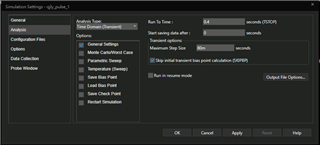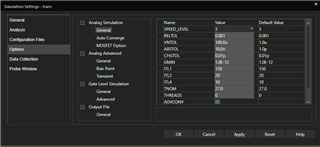Other Parts Discussed in Thread: LMR33630, TINA-TI
Hi i would like to know how to make this running simulation time more fast?
because i need to see the result fast, but on the contrary the load result is too slow.
Please tell me the reason what makes the running simulation to run slow? Thank you




